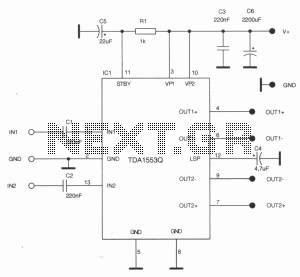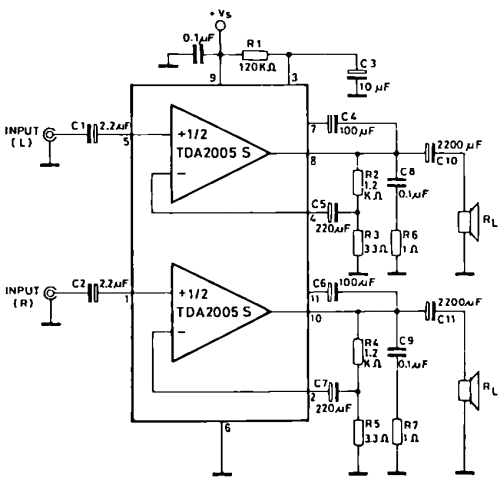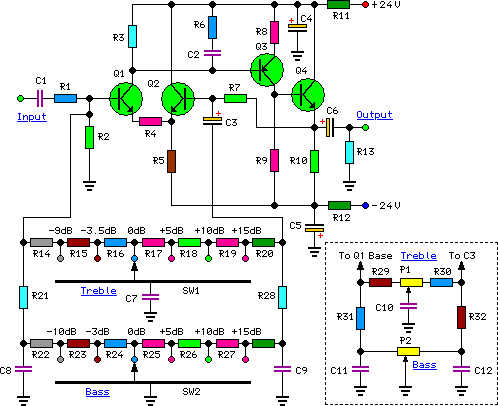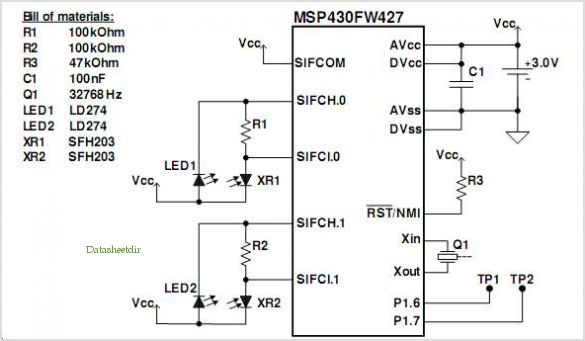
The schematic diagram fo Car Horn using IC 555
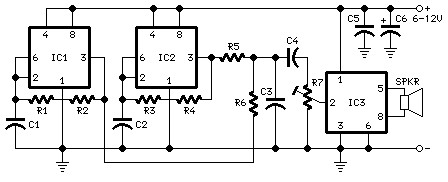
The following diagram is the schematic diagram for a car horn circuit, which can be utilized for car modifications. Components List: R1 = 68K, R2 = 2K2, R3 = 56K, R4 = 3K3, R5, R6 = 4K7, R7 = 10K Pot/trimpot, C1, C2 = 22nF, C3, C5 = 100nF, C4 = 1nF, C6 = 22.
The car horn circuit schematic is designed to integrate various resistive and capacitive components to control the sound output of the horn. The circuit utilizes a combination of resistors (R1 to R7) and capacitors (C1 to C6) to shape the audio signal, ensuring that the horn produces a distinct sound that is suitable for automotive applications.
Resistors R1 (68K), R2 (2K2), R3 (56K), and R4 (3K3) serve to limit current flow and set the gain of the signal. R5 and R6, both rated at 4K7, are used for biasing purposes, while R7, a 10K potentiometer, allows for adjustable control over the circuit, enabling fine-tuning of the horn's volume or pitch.
The capacitors play a crucial role in filtering and coupling within the circuit. C1 and C2, each with a capacitance of 22nF, are likely used for high-frequency signal coupling, while C3 and C5, rated at 100nF, can serve as decoupling capacitors to stabilize the power supply and prevent noise. C4, with a value of 1nF, may be utilized for high-pass filtering, and C6 (22nF) further assists in signal processing.
This schematic is ideal for those looking to modify or enhance their vehicle's horn system, providing a clear and effective means to achieve desired sound characteristics through careful component selection and arrangement. Proper implementation of this circuit will ensure reliable operation and improved auditory signaling for automotive applications.The following diagram is the schematic diagram fo Car Horn, you may try this circuit for your car modification Components List: R1 = 68K R2 = 2K2 R3 = 56K R4 = 3K3 R5,R6 = 4K7 R7 = 10K Pot/trimpot C1,C2 = 22nF C3,C5 = 100nF C4 = 1nF C6 = 22.. 🔗 External reference
The car horn circuit schematic is designed to integrate various resistive and capacitive components to control the sound output of the horn. The circuit utilizes a combination of resistors (R1 to R7) and capacitors (C1 to C6) to shape the audio signal, ensuring that the horn produces a distinct sound that is suitable for automotive applications.
Resistors R1 (68K), R2 (2K2), R3 (56K), and R4 (3K3) serve to limit current flow and set the gain of the signal. R5 and R6, both rated at 4K7, are used for biasing purposes, while R7, a 10K potentiometer, allows for adjustable control over the circuit, enabling fine-tuning of the horn's volume or pitch.
The capacitors play a crucial role in filtering and coupling within the circuit. C1 and C2, each with a capacitance of 22nF, are likely used for high-frequency signal coupling, while C3 and C5, rated at 100nF, can serve as decoupling capacitors to stabilize the power supply and prevent noise. C4, with a value of 1nF, may be utilized for high-pass filtering, and C6 (22nF) further assists in signal processing.
This schematic is ideal for those looking to modify or enhance their vehicle's horn system, providing a clear and effective means to achieve desired sound characteristics through careful component selection and arrangement. Proper implementation of this circuit will ensure reliable operation and improved auditory signaling for automotive applications.The following diagram is the schematic diagram fo Car Horn, you may try this circuit for your car modification Components List: R1 = 68K R2 = 2K2 R3 = 56K R4 = 3K3 R5,R6 = 4K7 R7 = 10K Pot/trimpot C1,C2 = 22nF C3,C5 = 100nF C4 = 1nF C6 = 22.. 🔗 External reference
